How to Survive a Blizzard
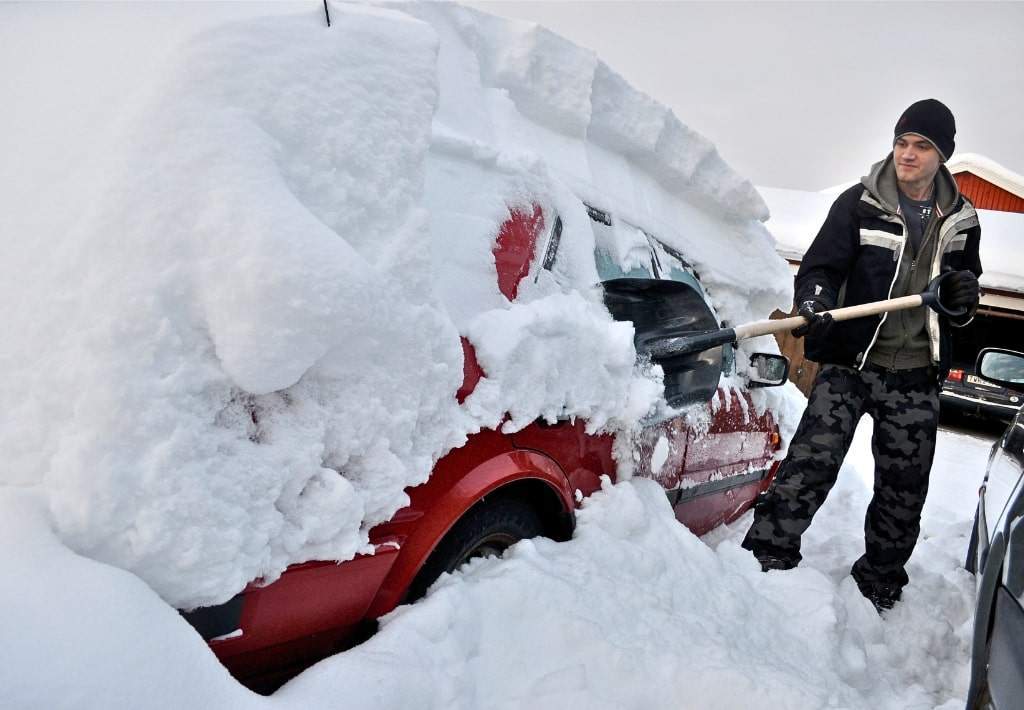
Blizzard Survival Tips and Strategies
The most important thing to remember during a blizzard survival situation is to stay calm and relaxed.
Blinding snow and paralyzing winds are just a few factors you will deal with during a blizzard.
Many experts believe global warming is due to recent winters becoming increasingly colder. Melting Arctic ice from rising temperatures has been messing up weather patterns and causing the Northern Hemisphere to suffer nasty weather patterns.
Surviving a blizzard is not tricky; the key is not to get too steamed and prepare well before the snow starts to come down.
What is a Blizzard?
A blizzard is a severe winter phenomenon characterized by solid winds, heavy snowfall, and reduced visibility. These conditions typically persist for an extended period, often lasting several hours or even days.
Blizzards commonly occur in regions with cold climates, such as polar areas, mountainous regions, and northern latitudes. The intense snowfall and high winds can lead to whiteout conditions, making it challenging to see and navigate.
Blizzards can pose significant risks to human safety, transportation systems, and infrastructure, requiring careful preparation and precautions to ensure survival and minimize damage.
Did You Know?
One lesser-known fact about blizzards is that they can produce a phenomenon called “thundersnow,” where lightning and thunder occur during heavy snowfall. Thundersnow adds to the intensity and unpredictability of blizzard conditions.
Understanding Blizzard Conditions: What Causes Them and How They Develop
Blizzards are extreme winter events characterized by heavy snowfall, strong winds, and reduced visibility. Understanding the conditions that lead to blizzards is crucial for preparedness and safety.
Blizzards typically occur when a mass of cold, dense air from the Arctic region collides with warmer, moist air from lower latitudes. This collision creates a sharp temperature contrast, forming a low-pressure system known as a cyclone. As the hurricane intensifies, it generates strong winds that can exceed 35 miles per hour (56 kilometers per hour) and pick up moisture from nearby bodies of water. When this moist air reaches colder temperatures, it condenses and forms snowflakes. The combination of heavy snowfall and high winds results in blizzard conditions, often accompanied by whiteout conditions where visibility is severely reduced.
Blizzards can develop rapidly and last for several hours or even days, posing significant risks to life and property. By understanding the factors that contribute to blizzard formation, individuals and communities can take proactive measures to prepare for and mitigate the impact of these severe weather events.
Heed the Warnings
Don’t cut yourself off from the outside world. Keep track of upcoming weather patterns in your area. Heed the warnings if the news reports show a blizzard heading your way.
Make a run to the store and stock up sooner rather than later. Stock up on food, water, batteries, and bare survival essentials you may be low on. You may want to pick up indoor games, such as video and board games, to keep you and your family occupied while in the house.
Some shovels and rock salt may be helpful if you must dig your way out. You may want to look into a kerosene heater or other self-generating heater that does not rely on electricity if the power fails from the storm.
It’s better to have these items and not need them instead of not having them and needing them.
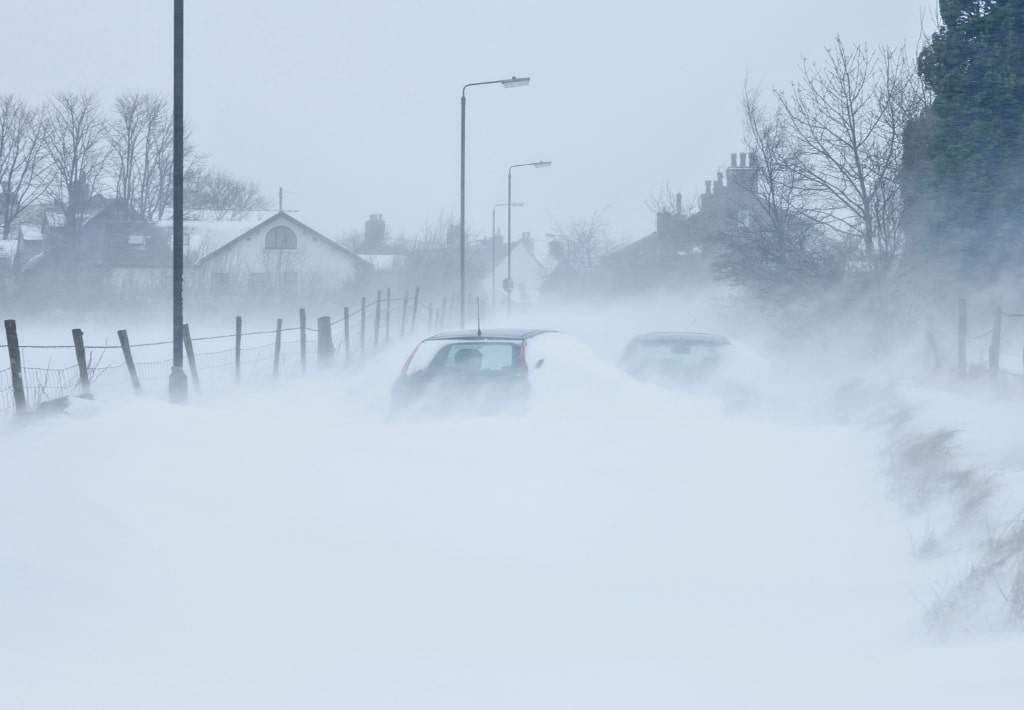
Blizzard Survival Guide: Essential Tips and Strategies
Helpful advice on how to stay safe and secure during extreme winter storms.
From preparing your home and family to navigating treacherous conditions, this guide provides invaluable insights to help you confidently weather the storm.
Patience is Virtue
The golden rule, of course, is to stay calm, warm, and patient. Especially if you’re caught in a blizzard in the comfort of your home, the snowfall could amount to feet instead of inches.
If you can, shovel the snow away from doors and walkways every hour to keep ahead of the storm. This will also keep your mind busy and your body active. Once the blizzard is over, you will be happy you did.
Be patient if you’re caught outside or in a car; it could save your life. Stay warm and hydrated. This will fight off frostbite and hypothermia until rescuers can reach you.
Create a Blizzard Survival Plan
Preparing for a blizzard involves more than stocking up on bread and milk.
Creating a comprehensive blizzard survival plan for your home and family ensures everyone stays safe and comfortable during severe winter weather.
Here are some practical steps you can take to prepare for the next big snowstorm:
- Assess home vulnerabilities: Look around your home and identify potential risks such as power outages, frozen pipes, or blocked access to essential services.
- Develop a communication plan: Establish designated meeting points and emergency contact numbers for family members and emergency services. It’s crucial to stay connected, especially during emergencies.
- Stock up on supplies: Ensure you have enough non-perishable food, water, medications, flashlights, batteries, blankets, and a first-aid kit to last several days. Don’t forget about your furry friends – ensure you have enough pet food and supplies!
- Ensure home insulation: Keep your home warm by sealing drafts, insulating windows, and preparing alternative heating sources like a generator or fireplace in case of power outages.
- Prepare your vehicle: Winterize it and keep it stocked with emergency supplies like a shovel, ice scraper, jumper cables, and traction aids. You never know when you might get stuck in a snowdrift!
- Stay informed: Stay up-to-date with weather forecasts and advisories, and follow local authorities’ instructions for evacuation or sheltering in place. Knowledge is power when it comes to weathering the storm.
These proactive steps can create a solid blizzard survival plan to help you and your family stay safe and comfortable until the snow stops falling.
Essential Emergency Supplies for Surviving a Blizzard
Preparing for a blizzard means stocking up on essential emergency supplies to ensure you and your family are well-equipped to weather the storm. From food and water to tools and warmth, here are the must-have items you’ll need to survive a blizzard in comfort and safety:
- Non-perishable food: Stock up on canned goods, dry goods like pasta and rice, and other non-perishable items that don’t require refrigeration or cooking.
- Water: Make sure you have ample clean drinking water for each person in your household, typically at least one gallon daily.
- Medications: Don’t forget to refill prescription medications and stock up on over-the-counter remedies for common ailments.
- Flashlights and batteries: Keep several flashlights and plenty of spare batteries handy to ensure you have reliable lighting during power outages.
- Blankets and warm clothing: Stay cozy and warm with extra blankets, sleeping bags, and layers of warm clothing, including hats, gloves, and thermal underwear.
- First-aid kit: Be prepared for minor injuries with a well-stocked first-aid kit that includes bandages, antiseptic wipes, pain relievers, and other essential medical supplies.
- Portable heater or alternative heating source: In case of power outages, have a backup plan for staying warm, such as a portable heater, kerosene heater, or fireplace.
- Power generator: Invest in a portable generator for backup power during outages. Ensure it’s well-maintained and fueled, and follow safety precautions. It keeps essential appliances running for comfort and safety.
- Extra fuel: Stock up on fuel for your generator and other equipment. Make sure it’s stored safely and away from potential hazards. Extra fuel ensures you can keep essential appliances and tools running for an extended period, providing added security during a blizzard.
- Emergency communication devices: Keep a charged cell phone, battery-powered radio, and other communication devices on hand to stay informed about weather updates and emergency alerts.
- Tools and equipment: Basic tools like a shovel, ice scraper, and snow shovel for clearing paths and removing snow from your vehicle.
- Entertainment and comfort items: Don’t forget about the little things that can make a big difference during a blizzard, like books, board games, and comforting items for children and pets.
Food and Water: Stocking Up for a Blizzard and Extended Power Outages
During a blizzard, access to food and water may be limited due to power outages or impassable roads. Stocking up on supplies is essential to ensure you have enough to sustain yourself and your family until conditions improve. Here are some tips on how to prepare and stock up on food and water for a blizzard and extended power outages.
- Plan Your Meals: Create a meal plan that includes non-perishable foods that require little to no cooking. Opt for canned goods, dry goods like rice and pasta, and shelf-stable items like crackers and granola bars. Consider dietary restrictions and preferences when selecting food items.
- Stock Up on Water: Ensure you have ample clean drinking water for each household member, typically at least one gallon daily. Fill containers, such as jugs or bottles, with water and store them in a cool, dark place. Consider purchasing water purification tablets or a portable water filter as a backup option.
- Consider Non-Perishable Foods: Choose non-perishable foods that require minimal preparation and can be eaten cold if necessary. Stock up on canned fruits and vegetables, soups, beans, and protein sources like canned meat or fish. Include high-energy snacks like nuts, dried fruit, and protein bars for quick and easy sustenance.
- Don’t Forget About Babies and Pet Supplies: If you have infants or pets, stock up on formula, baby food, diapers, and pet food. Consider purchasing extra supplies of any medications or special dietary needs for your pets.
- Store food Safely: Store food items in a cool, dry place away from direct sunlight. Rotate your stock regularly to ensure items don’t expire. Check expiration dates and discard any expired or damaged items.
- Prepare for Cooking Without Power: Alternative cooking methods, such as a camp stove, grill, or portable gas burner. Stock up on fuel for cooking, such as propane or charcoal. Consider investing in a solar-powered oven or cooker as a sustainable cooking option.
Blizzard Interuptus
Blizzards can have significant economic impacts beyond the immediate disruption of transportation and infrastructure, affecting agriculture, tourism, and energy production.
Outside Blizzard Survival Tips
If you’re caught outside during a blizzard, chances are someone has already reported you missing. Find something to block the wind and try to stay as warm as possible. The body needs about 5 ounces of water an hour to stay hydrated. Hopefully, you have some water with you. Try not to eat the snow; it will lower your body temperature.
If you see a building or shelter nearby, carefully approach it. The blinding snow makes it almost impossible to see. Be very careful crossing roadways; someone driving a vehicle or a snow plow may not see you crossing the road. You can use your feet to stomp out “SOS” or “HELP” in the snow. Fill the letters with rocks, trash, or anything you can find so it will stand out and rescuers can better see it.
When facing the harsh conditions of a winter blizzard, having a safe and warm shelter can make all the difference in surviving the cold.
Here are some tips on building a winter emergency shelter to protect you and your loved ones during extreme weather conditions.
- Choose a Shelter Location: Find a spot that offers protection from wind, snow, and other elements. Look for natural windbreaks like trees or rocks. Ensure the ground is flat and free from hazards like falling branches or avalanches. Avoid low-lying areas prone to flooding or areas with potential avalanche risks.
- Gather Shelter Materials: Collect materials for your shelter, such as branches, logs, snow blocks, or a tarp. Use sturdy branches or logs to create a frame for your shelter, ensuring it’s strong enough to withstand snow and wind. If using snow blocks, compact the snow to form sturdy walls that provide insulation against the cold.
- Construct the Shelter: Build a simple lean-to shelter by propping branches or logs against a sturdy support, such as a tree or rock. Cover the frame with additional branches, leaves, or a tarp to provide insulation and protection from the elements. If using snow blocks, stack them in a staggered pattern to create walls, leaving a small opening for ventilation. Ensure the shelter is large enough to accommodate everyone and provides enough headroom to sit or lie down comfortably.
- Add Insulation: Layer the shelter floor with pine needles, leaves, or branches to create a barrier between you and the cold ground. Cover the roof and walls with additional layers of snow, branches, or a tarp to provide extra insulation. Consider using a space blanket or emergency sleeping bag for added warmth.
- Stay Dry and Warm: Once inside the shelter, remove any wet clothing and change into dry layers. Use body heat to warm up the interior of the shelter. If possible, light a fire outside the shelter for warmth and to melt snow for drinking water. Ensure adequate ventilation to prevent carbon monoxide buildup using a fire or portable stove inside the shelter.
Caught in a Vehicle
If you are traveling in a vehicle and a blizzard hits., You will want to use your vehicle as protection against the elements. Stay warm and keep hydrated by drinking plenty of water. If you must urinate, use a plastic bag or empty bottle, and don’t leave the vehicle’s safety. You want to keep as much warmth as possible inside the vehicle. You don’t want to expose yourself to the blistering cold temperatures outside and risk hypothermia.
The only reason to go outside is to tie something to your antenna, like a cloth, plastic bag, or anything that will let rescuers know you’re in the vehicle. Turn your interior light on like a beacon at night. Use anything you can find in the car to keep warm: newspapers, maps, blankets, clothes, etc. Pile it all on.
Turn your vehicle off. Once the snowfall reaches a certain height, it can clog your exhaust pipe, and your cabin will start to fill with deadly carbon monoxide.
If you’re in a car, you will want to do your best to get safely off or to the side of the road. Keep your vehicle running for warmth, and turn on your hazard lights. Do your best to signal rescuers to your location.
How to Build an Igloo
The best-known Arctic shelter is the igloo. With brilliant use of resources and engineering, this simple dome made of snow blocks is solid and versatile.
- Size Matters – Put a stick in the ground where the center of your igloo will be. Tie a string to the stick and make a 10′ in diameter circle around the stick (anything more extensive will require special tools and a perfect dome).
- Wall Construction – Cut blocks of snow for the walls. Each block should be about 15 inches high and 3 feet long from inside the circle. Use the lower, harder snow, not the powdery stuff on top. Start building the blocks in a spiral along your etched line, like a ramp, with each new layer tipping slightly inward toward the middle. Get the rest of the blocks from the area outside the igloo. Once built, water down the outside of the igloo and let it freeze. This will make the igloo itself more robust and sturdy.
- Entrance – Dig a hole outside the area where you want the entrance. Tunnel at an angle to maintain maximum heat. You will want to keep the hole open to allow ventilation. Then, cut a smaller vent hole in the wall for circulation.
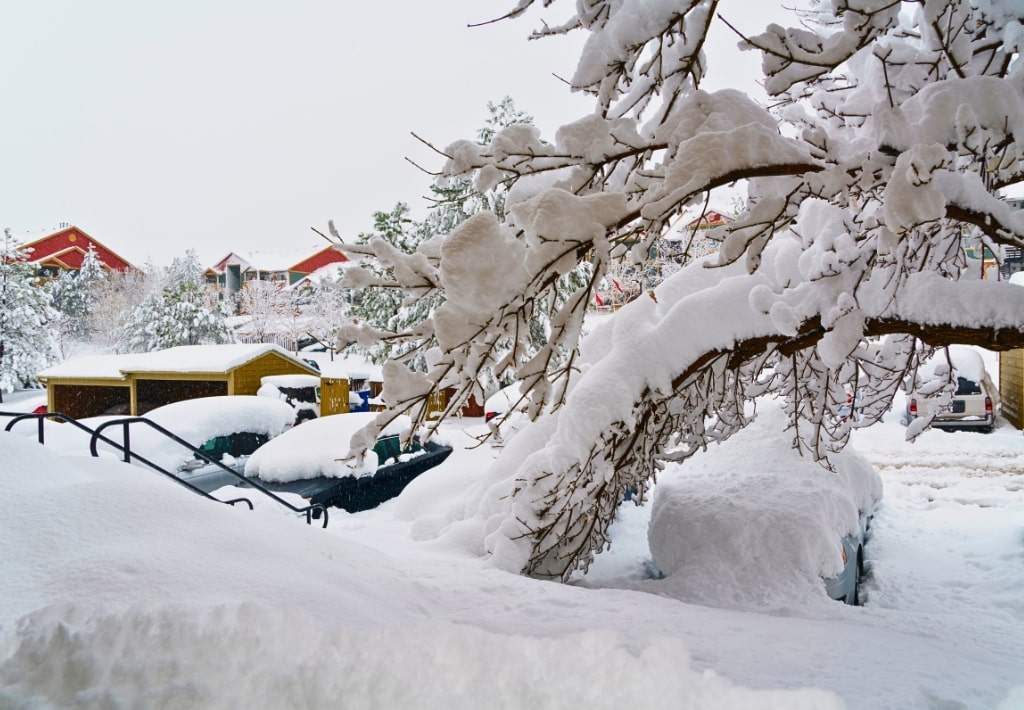
Health Risks and Safety Precautions During a Blizzard
Blizzards can pose significant health risks, including hypothermia, frostbite, and carbon monoxide poisoning. Taking precautions to protect yourself and your family during severe winter weather is crucial.
Here are some health risks to be aware of and safety precautions to take during a blizzard:
- Hypothermia: Hypothermia occurs when the body loses heat faster than it can produce, causing a dangerously low body temperature. Symptoms include shivering, confusion, slurred speech, and drowsiness. Dress in layers and wear insulated, waterproof clothing to retain body heat. Limit exposure to cold temperatures and seek shelter indoors if possible. Avoid alcohol and caffeine, as they can increase heat loss and impair judgment.
- Frostbite: Frostbite occurs when skin and underlying tissues freeze due to prolonged exposure to cold temperatures. Symptoms include numbness, tingling, pain, and skin discoloration (white or grayish-yellow). Cover exposed skin with gloves, hats, scarves, and insulated footwear to prevent frostbite. If you suspect frostbite, seek medical attention immediately and avoid rubbing or massaging the affected area.
- Carbon Monoxide Poisoning: Carbon monoxide (CO) is a colorless, odorless gas produced by fuel-burning appliances such as generators, stoves, and heaters. Exposure to high levels of CO can be fatal. Never use portable generators, charcoal grills, or gas-powered appliances indoors or in enclosed spaces. Ensure proper ventilation when using fuel-burning devices and install carbon monoxide detectors in your home. If you experience symptoms of CO poisoning, including headache, dizziness, nausea, and confusion, evacuate the area immediately and seek medical help.
- Slips and Falls: Icy and snowy conditions increase the risk of slips and falls, leading to injuries such as sprains, strains, and fractures. Wear sturdy, slip-resistant footwear with good traction. Walk cautiously on icy or slippery surfaces and use handrails when available. Remove sidewalks and walkways from snow and ice by shoveling and applying salt or ice melt.
- Emotional Stress: Extended periods of isolation and confinement during a blizzard can contribute to feelings of anxiety, depression, and loneliness. Stay connected with friends and family through phone calls, text messages, and video chats. Engage in activities that promote relaxation and stress relief, such as reading, listening to music, or practicing mindfulness exercises. Reach out for support if you’re feeling overwhelmed or distressed.
Communication Strategies: How to Stay Connected During a Blizzard
Effective communication is essential during severe weather events like blizzards to ensure the safety and well-being of yourself and your loved ones. Whether receiving weather updates or coordinating emergency plans, staying connected is critical. Here are some communication strategies to help you stay connected during severe weather:
- Emergency Alerts: Sign up for emergency alerts and notifications from local authorities and weather agencies to receive real-time updates on severe weather conditions, evacuation orders, and other critical information. Enable wireless emergency alerts (WEAs) on your mobile phone to receive automatic alerts for imminent threats in your area, including blizzard warnings and evacuation notices. Keep a battery-powered or hand-cranked weather radio to receive weather forecasts and emergency alerts even if power and internet service are disrupted.
- Mobile Phones: Ensure your mobile phone is fully charged before severe weather strikes, and consider investing in portable chargers or power banks to keep your device powered during power outages. Keep a list of emergency contacts, including family members, friends, and local authorities, programmed into your phone for easy access. Use text messaging instead of making phone calls during emergencies, as text messages are more likely to go through during periods of high network congestion.
- Social Media: Follow official accounts and pages of local authorities, emergency management agencies, and weather forecasters on social media platforms like Twitter, Facebook, and Instagram for timely updates and instructions during severe weather events. Use social media platforms to communicate with friends, family, and neighbors to share information, check on each other’s safety, and coordinate emergency plans.
- Neighborhood Networks: Establish a neighborhood communication network with your neighbors to share important information, resources, and assistance during emergencies. Exchange contact information, create group chats or email lists, and designate a central meeting point or community shelter in case of evacuation.
- Landline Phones: Keep a landline or corded telephone as a backup communication device, as landlines may still work during power outages when cellular networks are down. Program significant phone numbers, including local emergency services, into your landline phone for quick access in case of emergencies.
Rescue and Evacuation During a Blizzard
If you find yourself stranded in a blizzard, knowing what steps to take to increase your chances of survival and eventual rescue is crucial.
Follow these guidelines to stay safe and maximize your chances of being rescued:
Stay Calm and Assess Your Situation
- Maintain a calm mindset to make rational decisions.
- Assess your surroundings and available resources.
Signal for Help
- Use visual and auditory cues to attract attention.
- Blow a whistle, shout, or use a flashlight.
Stay Put and Seek Shelter
- Find or create a shelter to protect yourself from the elements.
- Construct a snow cave, makeshift tent, or natural windbreak.
Conserve Energy and Resources
- Ration food and water supplies to ensure they last.
- Avoid unnecessary physical exertion to conserve energy.
Stay Hydrated and Nourished
- Drink water regularly to prevent dehydration.
- Consume high-energy, non-perishable foods to maintain strength.
Stay Connected and Communicate
- Use mobile phones or communication devices to stay in touch.
- Provide your location and relevant information to emergency contacts.
Follow Rescuers’ Instructions
- Cooperate fully with rescue teams and follow their instructions.
- Be prepared to move quickly and follow evacuation procedures.
Following these rescue and evacuation strategies can increase your chances of survival and ensure a safe outcome during a blizzard emergency. Remember to prioritize safety, stay informed, and assist others as needed.
Mental and Emotional Preparedness
During a blizzard, the mental and emotional toll can be as challenging as the physical hardships. Coping with stress and isolation during these harsh conditions requires mental preparedness and resilience.
Firstly, it’s essential to acknowledge and accept the reality of the situation while maintaining a positive mindset. Understanding that blizzards are temporary events and that help is available can alleviate helplessness and anxiety.
Furthermore, staying connected with loved ones and support networks can provide much-needed emotional support during isolation. Whether through phone calls, text messages, or video chats, reaching out to friends and family can help combat loneliness and isolation
Additionally, engaging in activities that promote relaxation and mindfulness, such as meditation or yoga, can help manage stress levels and promote emotional well-being.
Interesting Facts About Blizzards
Winter blizzards are powerful natural phenomena characterized by heavy snowfall, strong winds, and dangerously low visibility.
These extreme weather events can disrupt transportation, cause power outages, and pose significant risks to human safety.
Understanding the facts about blizzards is crucial for preparing and staying safe during these severe storms.
Facts About Winter Blizzards:
- Blizzards are defined by sustained winds of at least 35 mph and visibility of less than a quarter-mile for at least three hours.
- A blizzard emergency kit should include water, food, blankets, and emergency tools.
- The 1977 blizzard in Ohio and New York lasted five days. It was fiercely windy despite relatively low snowfall.
- Blizzards can cause whiteout conditions, reducing visibility to near zero and treacherous travel.
- Traveling during a blizzard significantly increases the risk of accidents, hypothermia, and even death.
- Rochester, New York, is among the snowiest cities in the United States, with annual snowfall exceeding 94 inches.
- Weather agencies issue Winter Storm Watches to warn of possible blizzards and Winter Storm Warnings when blizzards are imminent or occurring.
- Preparation is vital before a blizzard strikes; stock up on non-perishable food, batteries, flashlights, and blankets.
- Blizzards can lead to power outages, disrupt heating systems, and leave households without heat or hot water.
- Staying informed through weather updates and heeding official warnings can help individuals and communities stay safe during blizzards.
More Nature’s Wrath Scenarios
How to Survive a Wildfire
Wildfires are one of nature’s most unpredictable and destructive forces, and they can engulf entire…
How to Survive a Landslide
Landslides are one of nature’s sudden, unexpected acts, like finding a $20 bill in an old jacket, but far…
How to Survive a Hurricane
Hurricanes are nature’s way of reminding us who’s in charge—think of it as the weather throwing a…
How to Survive a Tsunami
Surviving a tsunami is a terrifying thought, but it’s something we should all be aware of, especially if we…
How to Survive a Lightning Strike
Thunderstorms are a mesmerizing display of nature’s power, but they also bring the terrifying threat…
Recent Survival Posts
How to Survive a Layoff
Layoffs feel personal—even when they’re not. One day, you’re responding to Slack messages and forwarding…
How to Survive a Drug Test
I never imagined I’d be so emotionally invested in a paper cup. But there I was, standing under the fluorescent…
How to Survive an Interrogation
If you’ve ever been caught in the crosshairs of an overly enthusiastic mall cop or stared down by someone…
How to Survive a Nightclub Shooting
Nightclubs pulse with life—lights flashing, music pounding, bodies packed tight on the dance floor. It’s a place to…
How to Survive a Bachelor Party
A bachelor party is a delicate mix of celebration, chaos, and questionable decision-making, wrapped…
More Nature’s Wrath Survival Scenarios
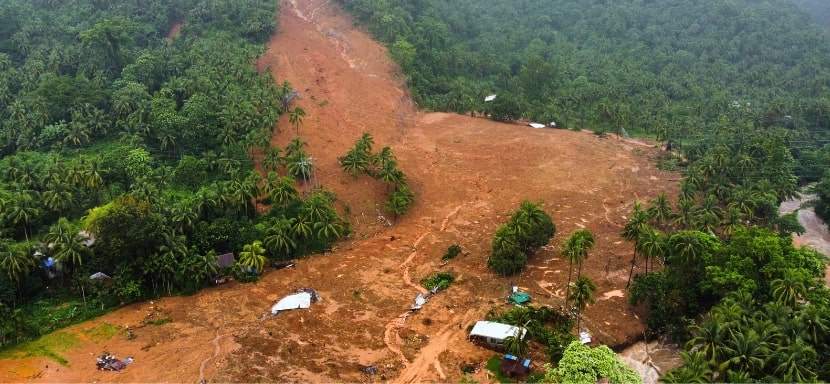
How to Survive a Landslide
Landslides are one of nature's sudden, unexpected acts, like finding a $20 bill in an old jacket—only there's no thrill of discovery, just destruction. They strike without much warning, sweeping away everything in their path—homes, roads, vehicles, and, tragically,...
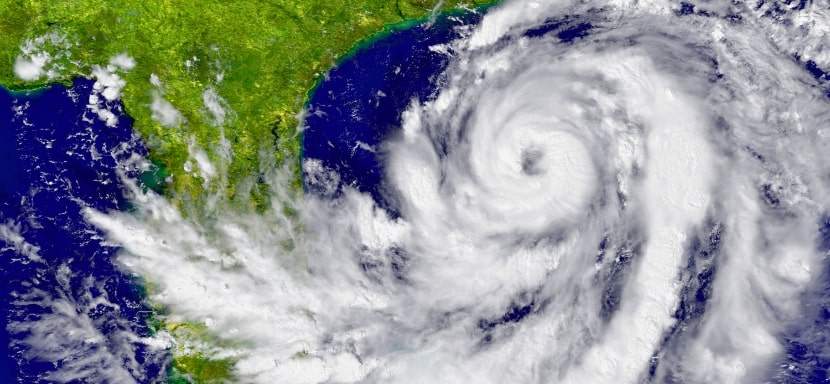
How to Survive a Hurricane
Hurricanes are nature's way of reminding us who's in charge—think of it as the weather throwing a tantrum. The winds howl, the rain pours, and trees bend until they snap. But while hurricanes are frightening, surviving them is possible with good preparation, clear...
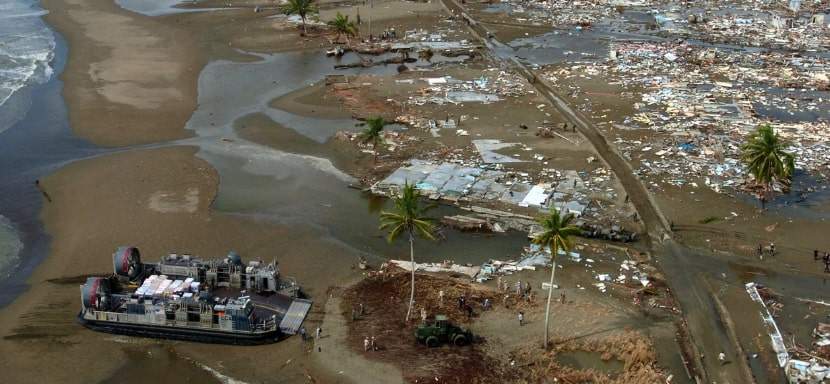
How to Survive a Tsunami
Surviving a tsunami is a terrifying thought, but we should all be aware of it, especially if we live near coastlines. A tsunami can strike with little warning, and the key to making it through alive is to know what to do before, during, and after the waves hit. Here,...
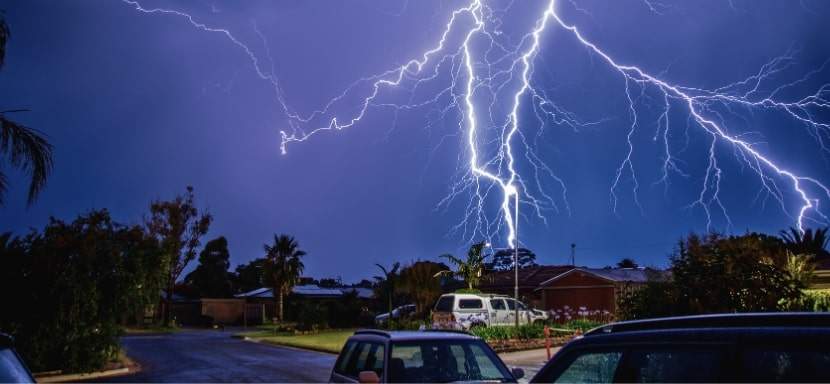
How to Survive a Lightning Strike
Thunderstorms are a mesmerizing display of nature's power, but they also bring the terrifying threat of lightning strikes. Each year, thousands of people worldwide are affected by lightning, with severe injuries and even fatalities resulting from these sudden...
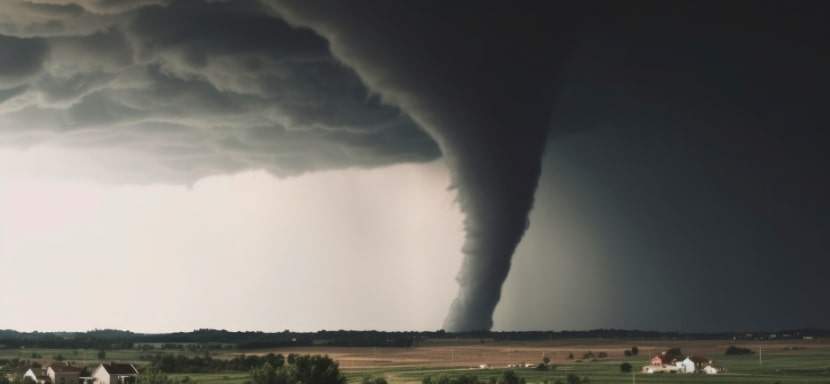
How to Survive a Tornado
Tornado Safety: How to Survive and Protect Your Family Learn life-saving strategies to protect yourself and your loved ones from the unpredictable fury of tornadoes. Tornadoes are among the most unpredictable and destructive natural phenomena. Their sudden and violent...
More Survival Scenarios

How to Survive a Layoff
When the Floor Falls Out: The Reality of a Layoff Layoffs feel personal—even when they're not. One day, you're responding to Slack messages and forwarding emails. Next, you're staring at your monitor as it logs you out... for good. Whether it's a restructuring, a...

How to Survive a Drug Test
The Cup, The Room, The Truth I never imagined I’d be so emotionally invested in a paper cup. But there I was, standing under the fluorescent hum of a strip-mall clinic, trying to recall the last time I ate a poppy seed bagel. That’s the thing about drug tests—they...

How to Survive an Interrogation
If you've ever been caught in the crosshairs of an overly enthusiastic mall cop or stared down by someone in a uniform with a clipboard and a glare, you’ve felt it — the chilly fingers of interrogation anxiety. And while most of us imagine interrogation scenes as...

How to Survive a Nightclub Shooting
Nightclubs pulse with life—lights flashing, music pounding, bodies packed tight on the dance floor. It’s a place to escape, feel the rhythm, and lose yourself in the crowd. But that same energy can turn deadly in seconds, transforming a night of fun into one of the...

How to Survive a Bachelor Party
A bachelor party is a delicate mix of celebration, chaos, and questionable decision-making, wrapped in the noble intention of sending the groom off into married life with a night he’ll (hopefully) remember. It’s a ritual as old as time—well, as old as men deciding...

How to Survive Your First Time at the Gym
Walking into a gym for the first time can feel like stepping into an alien world. The machines hum with purpose, the regulars move confidently, and you’re left standing there, clutching your water bottle, wondering whether you’re in the right place—or on the right...

How to Survive a Worldwide Communications Breakdown
Imagine waking up to silence. Your phone doesn’t buzz, your email won’t load, and even your local radio station crackles with static. A worldwide communications breakdown has hit. What next? For many, this doomsday scenario may sound like the opening lines of a...
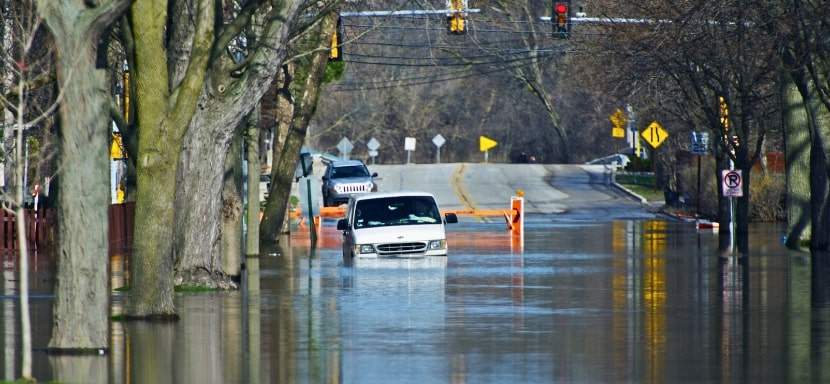
How to Survive a Flash Flood While Driving
Surviving a flash flood while driving requires quick thinking, calmness, and a solid plan to ensure your safety. Preparation can make all the difference between a close call and a catastrophe in emergencies like this. This guide provides practical advice to protect...
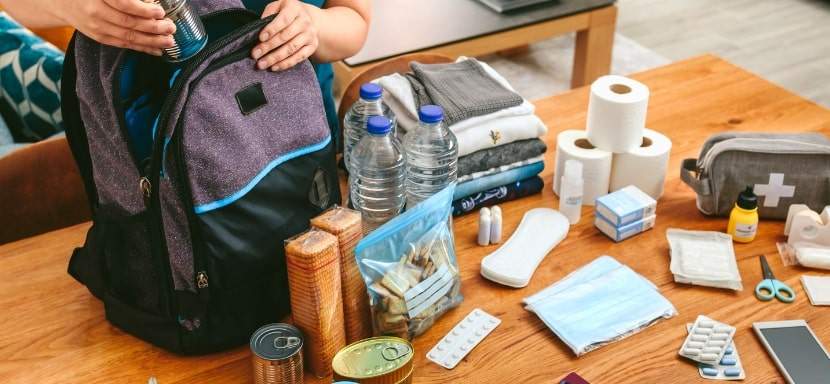
How to Build an Emergency Kit
Emergencies don’t knock politely at the door. They barge in, uninvited, like a distant relative with a penchant for drama, turning your world upside down without warning. Whether it’s a power outage, a natural disaster, or an unexpected evacuation, the key to staying...

How to Protect Yourself From Insects in the Wild
There’s nothing like being out in the wild—birdsong echoing through the trees, the fresh scent of earth, and a deep sense of peace that makes you think, “Ah, this is what life is about.” But then comes the buzzing. Mosquitoes, ticks, and flies swoop in like uninvited...
